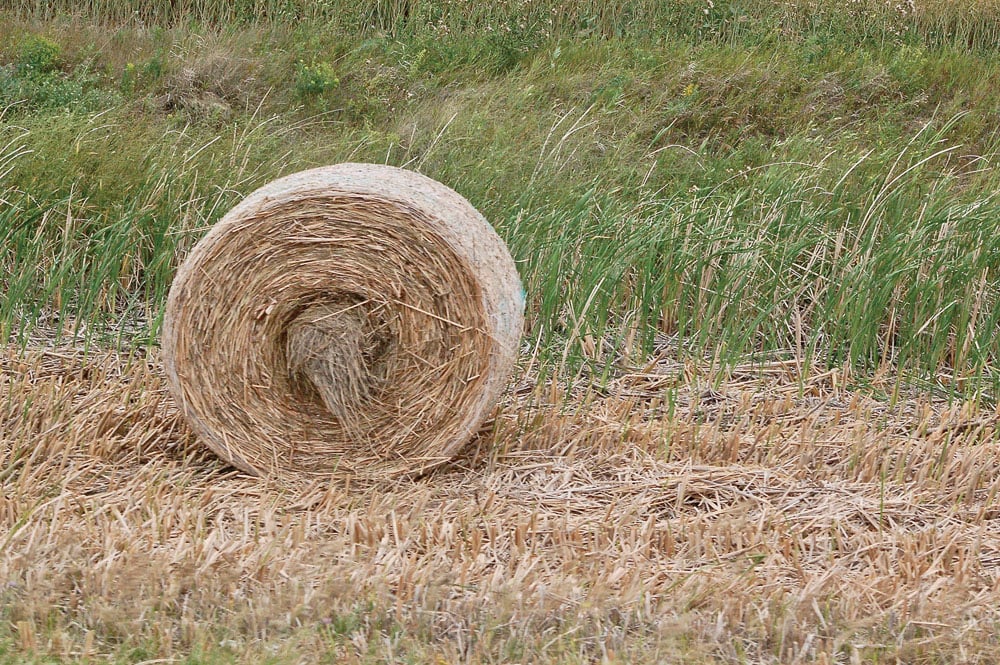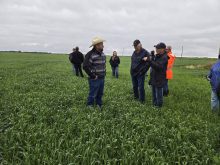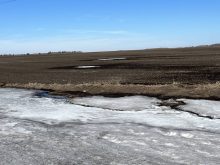If producers were hoping the second cut might take the sting out of Manitoba’s feed crisis, they’ll be disappointed.
Conditions vary, according to Carson Callum, general manager of the Manitoba Beef Producers (MBP), but anecdotes suggest that second cut will be “very poor or non-existent,” depending on region.
Why it matters: With all the stressors it faces, this year’s drought has sparked questions on what, exactly, Manitoba’s cattle sector might look like, come spring.
Read Also

Canadian canola prices hinge on rain forecast
Canola markets took a good hit during the week ending July 11, 2025, on the thought that the Canadian crop will yield well despite dry weather.
Hay producers knew there would be trouble before the swathers even touched fields earlier this summer. Stands were short and struggling with drought. Neighbours, friends and social medial contacts were largely reporting the same.
Few were surprised, then, when yields came back almost unanimously poor — in some cases, exceptionally so — and Manitoba braced for a feed shortage.
Early numbers suggested hay yields ranging mostly from half to 70 per cent of normal — with the exception of the heavily drought-stricken Interlake, where yields struggled to clear 40 per cent of typical.
A July update from the Manitoba Forage and Grassland Association (MFGA) put first cut anywhere from near normal in some areas, to as low as 10 per cent in others.
John McGregor, hay expert with the MFGA, noted drought conditions allowed little regrowth since that cut came off.
“If there is a second cut, it’s not going to be very much and, in the overall picture of the province, it’s probably not going to add a lot of feed,” he said.
Some producers, largely dairy farmers or those growing hay for sale, have taken a second cut. Others, McGregor noted, had plans to cut, but found there was not enough growth to warrant harvest, and now plan to graze those fields instead.
Of the cuts that have come off, McGregor estimates yields have cleared only 10 to 30 per cent of normal.
The eastern edge of western Manitoba, parts of the Interlake and south-central Manitoba did see up to 49 millimetres of rain in the second week of August.
Callum and McGregor, however, say that is unlikely to improve the outlook.
“There’s a long way between the rain and new growth and the potential for second cut,” McGregor said.
Buffer thinning
Some producers have already been forced to dip into their winter supplies.
“There’s very few cattle that are able to graze pasture to any significant amount, and I think that’s probably the worst thing right now,” McGregor said, noting that the province is at least two months from when producers would typically expect to take cattle off pasture.
It has been over a month since the first Interlake municipality announced a state of agricultural disaster, citing the non-existent pasture, water and feed for the region’s cattle sector.
Since then, crisis in the region has made national and international news, with thousands of cattle forced to market and significant cuts expected to the breeding herd.
Some producers, Callum noted, have already been feeding for weeks. The province’s auction marts, normally slowed to a trickle or shut over the summer, have instead seen a stream of sales, moving thousands of head as producers are forced to market cattle.
Prices up
Producers who are looking to buy hay will face a hefty price tag, compared to earlier this year.
Good-quality alfalfa-grass mix was selling for eight to 12 cents a pound (compared to five to eight cents in February), according to a July 23 hay price update put out by the MFGA. For beef-quality hay, both mixed and grass hays had also risen dramatically, with mixed alfalfa-grass moving from four to six cents a pound in February to six to 10 cents last month, and grass alone jumped from five to seven cents a pound in February to a range of eight to 11.5 cents.
In one, dramatic, increase, producers in February could expect to pick up greenfeed for 5-1/2 to six cents a pound. Those prices were closer to 12.5 cents a pound, as of late July.
The next MFGA report, due out in the near future, will likely see little change, McGregor suggested.
“One of the things that we are starting to hear back from producers is that some of the prices have met a maximum that they feel they can pay for it,” he said. “We’re going to see something similar to what we saw last year and other years where the asking price might be 12.5 cents, but the market will only be able to bear somewhat less than that price, and if that happens, then we’re going to continue to see a reduction in the number of cattle that are being overwintered.”
While Manitoba may have little hay to spare, McGregor noted there may be some sourced from Ontario.
Silage shortage
Producers may also be looking for a ‘Plan B’ for their normal safety net.
Drought stress in corn has also prompted worries that silage, something producers may have been counting on in anticipation of poor hay, will likely also fall short, despite a push to switch marginal annual crops to feed.
“We’re seeing some of that poor corn crop that might be converted into some sort of feed alternative or, even if it’s grain corn, put into some silage,” Callum said.
Jeff Cavers, who farms near La Riviere, estimates he will take in half or less of his normal corn silage.
“That’s where corn is deceiving,” he said. “As far as biomass (goes), the corn crop may look OK, but if it doesn’t produce cobs, that’s 50 to 60 per cent of your silage product, your tonnage.
“It’s another challenging situation on top of the hay,” Callum said, adding that drought-stressed corn silage might also have different feed value than producers are used to.
Callum urged producers to test their feed.
Put together, McGregor expects Manitoba’s feed situation to be worse than in 2019, when shortages also plunged the Interlake and Parkland into states of agricultural disaster.
“(In) 2019, there was straw available; there was corn silage available,” McGregor said. “There was a lot of other crop that producers could access, and this year, what you’re normally seeing now is we’ve got short straw. We’re not getting the yields of straw off the fields that we normally get. I’m guessing that we’re going to see a short corn silage crop. Instead of having 10-foot corn, we’ll probably have six or eight… There’s going to be a lot less feed available this year than what we saw in 2019.”
For more content related to drought management visit The Dry Times, where you can find a collection of stories from our family of publications as well as links to external resources to support your decisions through these difficult times.





















